To get Personalised & Individualised Care.
LIVE FREE FROM DISTRESS
It's our Pledge to deliver Quality Mental Health
Service to everyone in need.
Call for Consultation
DIAL NOW
+91 8827574927
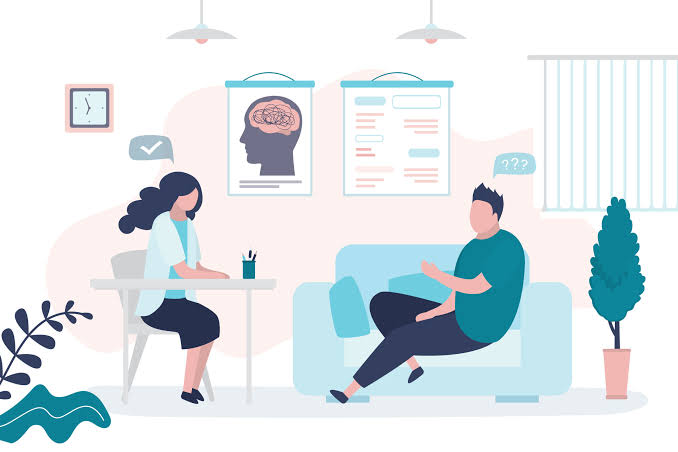
‘NIRVANA PSYCHIATRIC CLINIC’
Where we put People’s
Care first before
Anything
“Nirvana” is a Sanskrit word meaning- Place of Perfect Peace and Happiness, a State where a person’s individual Desires and Suffering Disappears.
‘Nirvana Psychiatric Clinic’, run by one of the top Psychiatrists in Raipur Dr. Vikalp Wasnik, MD Psychiatry from Central Institute of Psychiatry, Ranchi, and Dr. Shalini Bijali, DPM, DNB Psychiatry, is one-of-a-kind healthcare provider for all your Psychiatric and Mental wellbeing needs. Our team of experts stand strong with the essential pillars of Healthcare System, that is, Accessibility, Availability and Confidentiality where we are dedicated to making sure patients and their Families have access to Informational and Educational resources at every step of the care journey.
We stand out among Mental Healthcare Providers by the virtue of “Empathy”.
OUR SERVICES
Know More About Your Mental Health
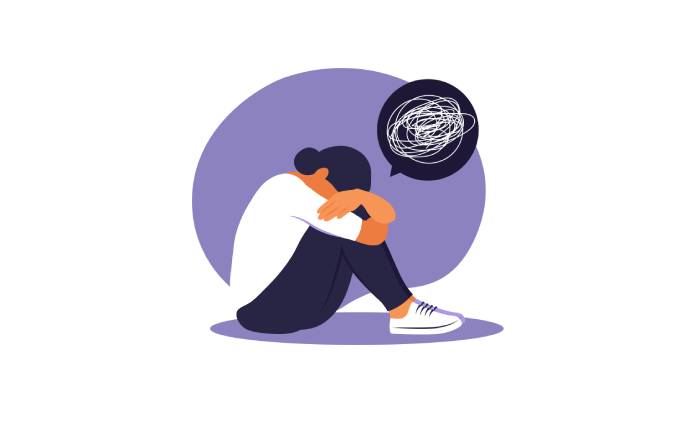
Depression
- Persistent sad, anxious, irritable or “empty” mood
- Feelings of hopelessness, or pessimism
- Feelings of irritability, frustration, or restlessness
- Feelings of guilt, worthlessness, or helplessness
- Loss of interest or pleasure in hobbies and activities
- Decreased energy, fatigue, or feeling “slowed down”
- Difficulty concentrating, remembering, or making decisions
- Difficulty sleeping, early morning awakening, or oversleeping
- Changes in appetite or unplanned weight changes
- Thoughts of death or suicide, or suicide attempts
- Aches or pains, headaches, cramps, or digestive problems without a clear physical cause that do not ease even with treatment
- Suicide attempts or thoughts of death or suicide
- Genes (familial)
- Neurotransmitter abnormalities in the brain, like reduced serotonin and dopamine
- Harmonal changes like thyroid abnormalities or pregnancy/ menstrual related
- Other systemic disorders like Diabetes, heart diseases, arthritis, kidney diseases, epilepsy etc
- Personality traits like thinking patterns, coping skills, defence mechanisms used while dealing with the stressors
- Death or loss of somebody/ something
- Physical, emotional or sexual abuse
- Major life changing events
- Chronic stressors
- Personal conflicts or disputes (specially when individual already have underlying biological cause)
- Substance Abuse- Tobacco, Alcohol, cannabis, Opioids etc
- Some medications like steroids, isotretinoin, Oral contraceptive pills are known to cause depressive like symptoms
- relieve symptoms enough to enable the person to cope in everyday life again, and
- make the symptoms go away sooner, preventing the depressionfrom further affecting their lives.
- further relieve the symptoms, until they go away, and
- sustain the progress made through treatment.
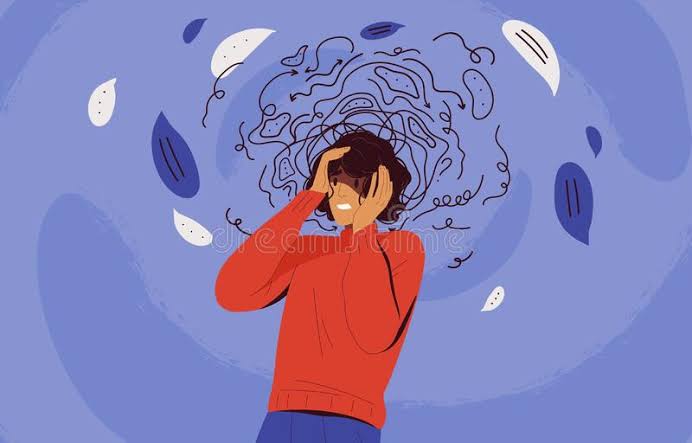
Anxiety Disorders
- Generalised Anxiety Disorder
- Panic disorder
- Post-traumatic stress disorder (PTSD)
- Social anxiety disorder
- Specific phobias
- Generalized Anxiety Disorder (GAD) is an exaggerated anxiety and tension that persists for months, sometimes even for years. GAD causes people to anticipate catastrophe and worry excessively about many things, from overarching concerns such as health, money or work to more routine concerns such as car repairs or appointments. When anxiety becomes so severe, normal life and relationships become impaired. Worries can be accompanied by physical symptoms, such as
- Fatigue
- Headaches, muscle tension and aches,
- difficulty swallowing,
- trembling, twitching,
- irritability,
- sweating, and hot flashes.
- Difficulty in breathing
- Difficulty in sleep
- Restlessness
- Inability to focus
- Cognitive Behavioral Therapy (CBT)
- Psychotherapy
- Stress-Management Techniques
- Relaxation techniques
- Antidepressants and Anti-Anxiety Medications
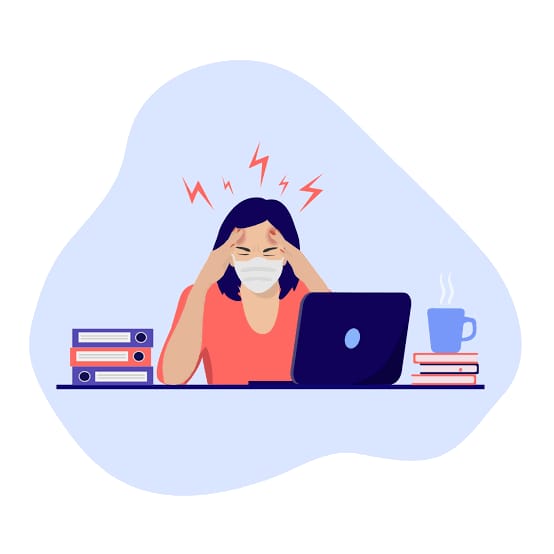
Stress
- sending blood to the muscles
- increasing breathing rate and heart rate
- releasing glucose into the bloodstream, which provides energy
- higher chance of experiencing a heart attack, stroke, or high blood pressure.
- Excessive release of cortisol due to chronic stress can cause fatigue, weakness, obesity
- Continuous exposure to cortisol, suppresses immune function resulting in increased chances of infections and disease
- Under chronic stress, your muscles may be in a constant state of tension, which can cause problems like chronic neck or jaw pain.
- Stress can exacerbate pre-existing respiratory issues like Asthma.
- Chronic stress also affects reproductive system leading to reduced libido, Erectile dysfunction or impotency. Chronic stress can reduce chances of fertility in both men and women.
- Mood changes
- Irritability
- Trouble sleeping
- Ideas of helplessness
- Anxiety
- Depression
- Difficulty in concentrating
- Disorganised thoughts
- Feeling out of control
- Dissociative episodes
- Post traumatic disorder
- Low self esteem
- Personality disorders
- Get more physical activity
- Follow a healthy diet
- Practice relaxation techniques like yoga, pranayama, meditation
- Practice self-care habits
- Take adequate sleep
- Reduce intake of harmful substances like nicotine, alcohol etc
- Take part in social gathering, community activities. Spend time with friends and family
- Nurture hobbies which keeps you relaxed
- Create healthy boundaries and learn to say no whenever necessary
- Practice healthy coping skills like problem solving, assertion, humor
- Minimize screen time and social media usage. Regulate the content you consume.
- Practice mindfulness in everyday life.
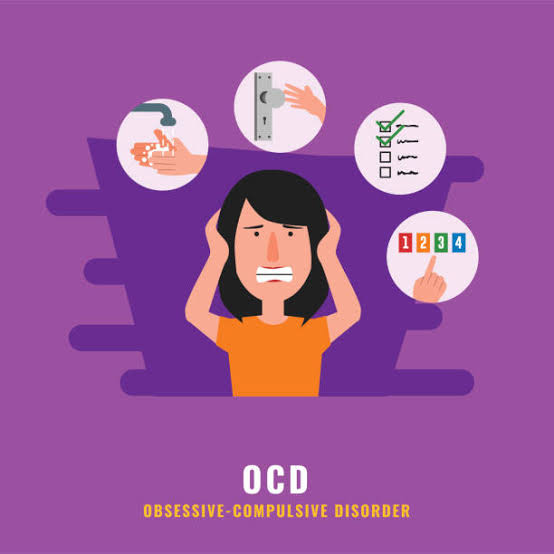
OCD
- Fear of germs or contamination
- Aggressive thoughts towards others or self
- Having things symmetrical or in a perfect order
- Forbidden or perverse sexual thoughts, images, or impulses
- RELIGIOUS OBSESSIONS- Concerned with sacrilege and blasphemy, Excess concern with right/wrong, morality
- Fear of doing something embarrassing
- Intrusive (non-violent) images
- Intrusive nonsense sounds, words, or music
- Lucky/unlucky numbers
- Colors with special significance Superstitious fears
- Concern with illness or disease
- Excessive cleaning and/or handwashing
- Ordering and arranging things in a particular, precise way
- Repeatedly checking on things, such as repeatedly checking to see if the door is locked or that the oven is off
- Compulsive counting
- REPEATING RITUALS like Re-reading or re-writing. Need to repeat routine activities(e.g. in/out door, up/down from chair)
- Repetitive Need to touch, tap, or rub
- Sexual compulsions like compulsive masturbation.
- Can’t control his or her thoughts or behaviors, even when those thoughts or behaviors are recognized as excessive
- Spends at least 1 hour a day on these thoughts or behaviors
- Doesn’t get pleasure when performing the behaviors or rituals, but may feel brief relief from the anxiety the thoughts cause
- Experiences significant problems in their daily life due to these thoughts or behaviors
- These repetitive acts or thoughts are very destressing and followed by guilt due to inability to stop.
- Medicines may take 8 to 12 weeks to start working. Be patient.
- Talk with your health care provider to make sure you understand the risks and benefits of the medications you’re taking.
- Do not stop taking a medication without talking to your health care provider first. Suddenly stopping a medication may lead to “rebound” or worsening of OCD symptoms. Other uncomfortable or potentially dangerous withdrawal effects are also possible.
- Report any concerns about side effects to your health care provider right away. You may need a change in the dose or a different medication.

Bipolar Disorder
- A decreased need for sleep with little apparent fatigue
- A sudden increase in goal-oriented activities(such as a project that needs to be done to the exclusion of other activities)
- Persistent and often purposeless movement
- Restlessness and an inability to remain still
- Rapid thoughts
- Increased talking, lack of connection between thoughts/ jumping from one topic to another
- Increased energy
- Intrusive thoughts
- Reckless behavior such as gambling or spending money recklessly.
- Elevated cheerful mood
- Extreme excitability
- Sudden shifts to extreme irritability, hostility, or even anger
- Inappropriate humor and brash behavior
- Hypersexuality and sexually provocative behaviors
- Reckless and extravagant spending (including the lavishing of gifts on friends, casual acquaintances, and even strangers)
- An increased focus on religious activity.
Medications
Certain medications can help manage symptoms of bipolar disorder. Some people may need to try several different medications and work with their health care provider before finding medications that work best. The most common types of medications that doctors prescribe include mood stabilizers and atypical antipsychotics.Medications that target sleep or anxiety are sometimes added to mood stabilizers as part of a treatment plan. People taking medication should:- Talk with their health care provider to understand the risks and benefits of the medication.
- Tell their health care provider about any prescription drugs, over-the-counter medications, or supplements they are already taking.
- Report any concerns about side effects to a health care provider right away. The health care provider may need to change the dose or try a different medication.
- Remember that medication for bipolar disorder must be taken consistently, as prescribed, even when one is feeling well.
Other Treatment Options
Some people may find other treatments helpful in managing their bipolar symptoms, including:- Electro Convulsive Therapy (ECT) is a brain stimulation procedure that can help relieve severe symptoms of bipolar disorder. ECT is usually only considered if an individual’s illness has not improved after other treatments such as medication or psychotherapy, or in cases that require rapid response, such as with suicide risk or catatonia (a state of unresponsiveness).
- Transcranial Magnetic Stimulation (TMS) is a type of brain stimulation that uses magnetic waves, rather than the electrical stimulus of ECT, to relieve depression over a series of treatment sessions. Although not as powerful as ECT, TMS does not require general anesthesia and presents little risk of memory or adverse cognitive effects.
- Get treatment and stick with it. Treatment is the best way to start feeling better.
- Keep medical and therapy appointments and talk with your health care provider about treatment options.
- Take medication as directed.
- Structure activities. Keep a routine for eating, sleeping, and exercising.
- Try regular, vigorous exercise like jogging, swimming, or bicycling, which can help with depression and anxiety, promote better sleep, and is healthy for your heart and brain.
- Keep a life chart to help recognize your mood swings.
- Ask for help when trying to stick with your treatment.
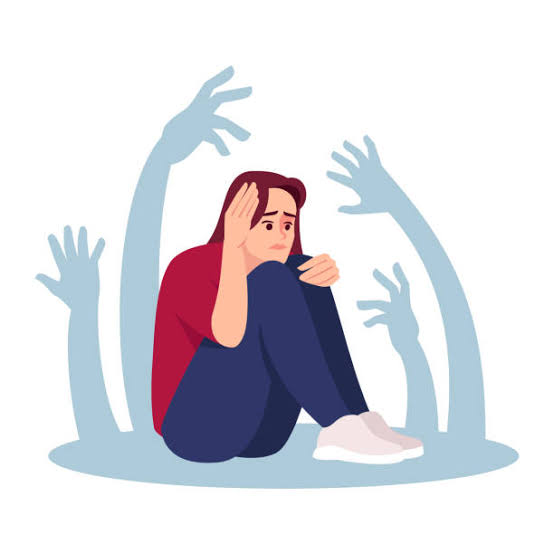
Psychosis/ Schizophrenia
- Hallucinations: When a person sees, hears, smells, tastes, or feels things that are not actually there. Hearing voices is common for people with schizophrenia. People who hear voices may hear them for a long time before family or friends notice a problem.
- Delusions: When a person has strong beliefs that are not true and may seem irrational to others. For example, individuals experiencing delusions may believe that people on the radio and television are sending special messages that require a certain response, or they may believe that they are in danger or that others are trying to hurt them.
- Thought disorder: When a person has ways of thinking that are unusual or illogical. People with thought disorder may have trouble organizing their thoughts and speech. Sometimes a person will stop talking in the middle of a thought, jump from topic to topic, or make up words that have no meaning.
- Movement disorder: When a person exhibits abnormal body movements. People with movement disorder may repeat certain motions over and over.
- Having trouble planning and sticking with activities, such as grocery shopping
- Having trouble anticipating and feeling pleasure in everyday life
- Talking in a dull voice and showing limited facial expression
- Avoiding social interaction or interacting in socially awkward ways
- Having very low energy and spending a lot of time in passive activities. In extreme cases, a person might stop moving or talking for a while, which is a rare condition called catatonia.
- Having trouble processing information to make decisions
- Having trouble using information immediately after learning it
- Having trouble focusing or paying attention
- Hallucinations: When a person sees, hears, smells, tastes, or feels things that are not actually there. Hearing voices is common for people with schizophrenia. People who hear voices may hear them for a long time before family or friends notice a problem.
- Delusions: When a person has strong beliefs that are not true and may seem irrational to others. For example, individuals experiencing delusions may believe that people on the radio and television are sending special messages that require a certain response, or they may believe that they are in danger or that others are trying to hurt them.
- Thought disorder: When a person has ways of thinking that are unusual or illogical. People with thought disorder may have trouble organizing their thoughts and speech. Sometimes a person will stop talking in the middle of a thought, jump from topic to topic, or make up words that have no meaning.
- Movement disorder: When a person exhibits abnormal body movements. People with movement disorder may repeat certain motions over and over.
- Having trouble planning and sticking with activities, such as grocery shopping
- Having trouble anticipating and feeling pleasure in everyday life
- Talking in a dull voice and showing limited facial expression
- Avoiding social interaction or interacting in socially awkward ways
- Having very low energy and spending a lot of time in passive activities. In extreme cases, a person might stop moving or talking for a while, which is a rare condition called catatonia.
- Having trouble processing information to make decisions
- Having trouble using information immediately after learning it
- Having trouble focusing or paying attention
- Help them get treatment and encourage them to stay in treatment.
- Make sure they are taking their medicines regularly. Some patients may even need supervised medication.
- Remember that their beliefs or hallucinations seem very real to them.
- Be respectful, supportive, and kind without tolerating dangerous or inappropriate behavior.
- Discuss with treating doctor regarding any doubts about the disease/treatment than believing myths.
- Look for support groups and family education programs

Inability to Sleep
- Poor sleep habits.Poor sleep habits include an irregular bedtime schedule, naps, stimulating activities before bed, an uncomfortable sleep environment, and using your bed for work, eating or watching TV. Computers, TVs, video games, smartphones or other screens just before bed can interfere with your sleep cycle.
- Concerns about work, school, health, finances or family can keep your mind active at night, making it difficult to sleep. Stressful life events or trauma — such as the death or illness of a loved one, divorce, or a job loss — also may lead to insomnia.
- Travel or work schedule.Your circadian rhythms act as an internal clock, guiding such things as your sleep-wake cycle, metabolism and body temperature. Disrupting your body’s circadian rhythms can lead to insomnia. Causes include jet lag from traveling across multiple time zones, working a late or early shift, or frequently changing shifts.
- Eating too much late in the evening.Having a light snack before bedtime is OK, but eating too much may cause you to feel physically uncomfortable while lying down. Many people also experience heartburn, a backflow of acid and food from the stomach into the esophagus after eating, which may keep you awake.
- Mental health disorders. Anxiety disorders, such as post-traumatic stress disorder, may disrupt your sleep. Awakening too early can be a sign of depression. Insomnia often occurs with other mental health disorders as well like Mania, Psychosis, Schizophrenia, delirium.
- Medications. Many prescription drugs can interfere with sleep, such as certain antidepressants and medications for asthma or blood pressure. Many over-the-counter medications — such as some pain medications, allergy and cold medications, and weight-loss products — contain caffeine and other stimulants that can disrupt sleep.
- Medical conditions. Examples of conditions linked with insomnia include chronic pain, cancer, diabetes, heart disease, asthma, gastroesophageal reflux disease (GERD), overactive thyroid, Parkinson’s disease and Alzheimer’s disease.
- Sleep-related disorders. Sleep apnea causes you to stop breathing periodically throughout the night, interrupting your sleep. Restless legs syndrome causes unpleasant sensations in your legs and an almost irresistible desire to move them, which may prevent you from falling asleep.
- Caffeine, nicotine and alcohol. Coffee, tea, cola and other caffeinated drinks are stimulants. Drinking them in the late afternoon or evening can keep you from falling asleep at night. Nicotine in tobacco products is another stimulant that can interfere with sleep. Alcohol may help you fall asleep, but it prevents deeper stages of sleep and often causes awakening in the middle of the night.
- adults need 7 to 9 hours
- children need 9 to 13 hours
- toddlers and babies need 12 to 17 hours
- You probably do not get enough sleep if you’re constantly tired during the day.
- Poor attention, Concentration
- Impaired memory
- Lower performance on the job or at school
- Slowed reaction time while driving and a higher risk of accidents
- Impaired judgement/ decision making
- Mental health disorders, such as depression, an anxiety disorder or substance abuse
- Felling irritable or inability to regulated emotions
- Increased risk and severity of long-term diseases or conditions, such as high blood pressure and heart disease
- Go to bed and wake up at the same time every day
- Relax at least 1 hour before bed, for example, take a bath or read a book
- Make sure your bedroom is dark and quiet and cool
- Exercise regularly during the day
- Make sure your mattress, pillows and covers are comfortable, can make use of some essential oil to get relaxed
- Use your bed only for sleeping
- Wind up your day with some daily habits like writing journal and saying goodnight
- Do not smoke or drink alcohol, tea or coffee at least 6 hours before going to bed
- Do not eat a big meal late at night
- Do not exercise at least 4 hours before bed
- Do not watch television or use devices, like smartphones, right before going to bed, because the bright light makes you more awake
- Do not nap during the day for more than 20-30 mins
- Do not use your bed for other purposes like eating, studying or playing
- There is problem in onset of sleep/ frequent awakening at night/ inability to go back to sleep after night awakening.
- When these symptoms occur repeatedly at least three nights a week and persists for more than three months
- Waking up earlier than your regular time
- Waking up tired
- Feeling tired and sleepy throughout the day
- Inability to sleep at night is associated with overthinking, worries, negative thoughts.
- These problems persist even after following all the do’s and don’ts of sleep hygiene habits.
- Inability to sleep is impairing day time functioning
- Inability to sleep is associated with any other mental health problems.
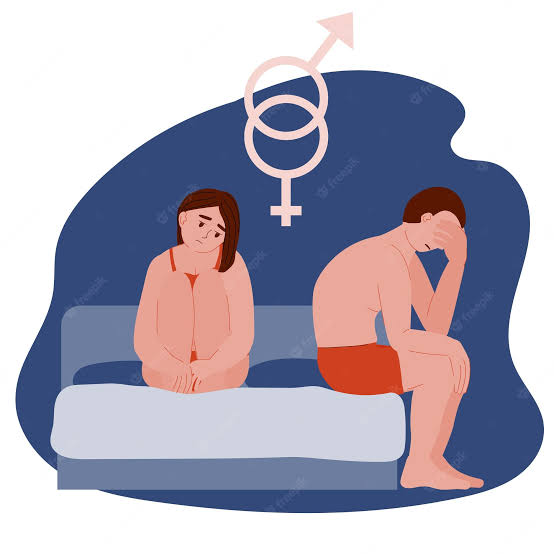
Sexual Disorders
- Problem in Desire: lack of sexual desire or interest in sex, both in men and women.
- Problem in Arousal: inability to become physically aroused or excited during sexual activity. Inability to achieve or maintain an erection (hard penis) suitable for intercourse (erectile dysfunction).
- Problem in Orgasm: delay or absence of orgasm (climax). Absent or delayed ejaculation despite enough sexual stimulation (retarded ejaculation). Inability to control the timing of ejaculation (early, or premature, ejaculation). Inability to achieve orgasm.
- Pain disorders: pain during intercourse, both in men and women.
- Inadequate vaginal lubrication before and during intercourse.
- Inability to relax the vaginal muscles enough to allow intercourse.
Physical Causes
There are many physical causes of sexual dysfunction. For example, the following diseases and conditions can lead to problems with sexual function:- Diabetes
- Cardiovascular disease (heart disease and blood vessel disease)
- High blood pressure
- High cholesterol
- Alcoholism
- Smoking Cigarette
- Drug abuse
- Hormonal imbalances
- Neurological disorders
- Chronic diseases, such as kidney failure
- Nerve damage
- Urological infections or cancer
- Some Prescription medications
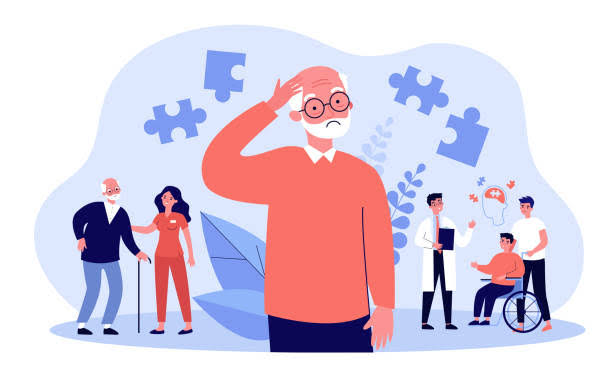
Memory Disorders
- Alzheimer’s disease
- Vascular dementia
- Lewy body dementia
- Frontotemporal dementia.
- Huntington’s disease
- Traumatic brain injury (TBI)
- Creutzfeldt-Jakob disease
- Parkinson’s disease
- Infections and immune disorders
- Metabolic problems and endocrine abnormalities
- Nutritional deficiencies
- Medication side effects
- Brain tumors
- Normal-pressure hydrocephalus
- Stop smoking, alcohol intake
- Manage cardiovascular risk factors like taking proper treatment for hypertension and diabetes and maintaining normal blood pressure and blood glucose
- having a healthy diet- reduce junk food and complete your daily requirement of vitamins and micronutrients.
- Be Physically active
- Participating in community activities- having a active social life and interactions reduces the risk of cognitive decline.
- Maintain hobbies/activities which are stimulating to brain.
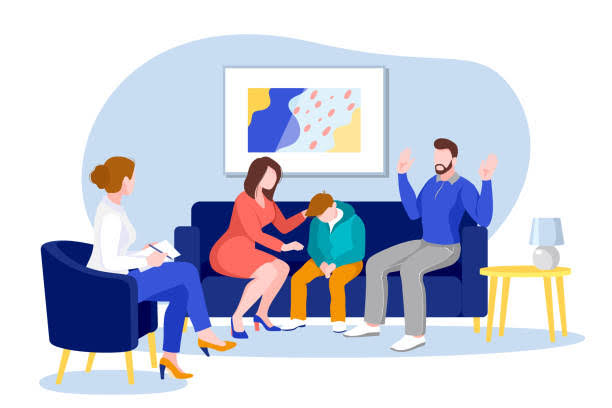
Child and Adolescent Psychiatry
- Anxiety disorders
- Stress related disorders
- Depression and Bipolar mood disorders
- Obsessive compulsive disorders
- Psychosis/ Schizophrenia
- Dissociation disorder
- Autism Spectrum disorders
- Attention Deficit Hyperactive Disorder (ADHD)
- Specific Learning Disorders / Dyslexia
- Tic / Tourette Disorder
- Intellectual disability
- Language and speech disorders
- Enuresis (Bed wetting)
- Eating disorders like pica, Avoidant/Restrictive food intake disorders
- Disruptive disorders like Oppositional Defiant Disorder and Conduct disorder
- Impulse Control Disorders
- Intermittent Explosive disorders
- Sleep related disorder
- Child abuse and neglect
- Persistent sadness that lasts two weeks or more
- Withdrawing from or avoiding social interactions
- Hurting oneself or talking about hurting oneself
- Talking about death or suicide
- Outbursts or extreme irritability
- Out-of-control behavior that can be harmful
- Drastic changes in mood, behavior or personality
- Changes in eating habits
- Loss of weight
- Difficulty sleeping
- Frequent headaches or stomachaches
- Difficulty concentrating
- Changes in academic performance
- Avoiding or missing school
- Changes in play behaviour
- Psychotherapy:Psychotherapy is also known as talk therapy. Psychotherapy is a way to address mental health concerns by talking with a psychologist/psychiatrist or other mental health professional. With young children, psychotherapy may include play time or games, as well as talk about what happens while playing. During psychotherapy, children and adolescents learn how to talk about thoughts and feelings, how to respond to them, and how to learn new coping skills.
- Behavioural Therapy: Behavioural therapy mainly aims at reducing maladaptive or harmful behaviour and encouraging healthy behaviour by using techniques of positive and negative reinforcement, Parents are involved in the therapy and taught how to practice these techniques at home.
- Medication:Though psychotherapy and behavioural therapy forms the main part of the treatment of most of the mental illnesses in children certain psychiatric disorders requires the use of medications for full recovery/management. Your psychiatrists are the best judge of what medications can be given (which are FDA approved) in children and up to what dosage. Your psychiatrist will explain risks, side effects and benefits of drug treatments.

Epilepsy
- Stroke
- Brain tumour
- Severe head injury
- Drug abuse/Alcohol misuse
- Brain infection
- Lack of oxygen during birth
- Metabolic imbalance
- Staring
- Jerking movements of the arms and legs
- Stiffening of the body
- Loss of consciousness
- Breathing problems or breathing stops
- Loss of bowel or bladder control
- Falling suddenly for no apparent reason, especially when associated with loss of consciousness
- Not responding to noise or words for brief periods
- Appearing confused or in a haze
- Nodding the head rhythmically, when associated with loss of awareness or even loss of consciousness
- Periods of rapid eye blinking and staring,lip smacking
- strange sensations, such as a “rising” feeling in the tummy, unusual smells or tastes, and a tingling feeling in your arms or legs
Things“to do” if someone is having a seizure
- DO Move any objects, such as furniture, away from them so that they don’t hurt themselves. Only move the person is they are in a dangerous place, for example in the road
- DO Put something soft (such as a jumper) under their head to stop it hitting the ground
- DO Check the time to see how long the seizure goes on for. If the seizure lasts more than 5 minutes call an ambulance.
- DO Try to stop other people crowding around. Think of your casualty’s dignity – they wouldn’t want to awake to see lots of faces staring at them. Try to minimise any embarrassment. If they have wet themselves deal with this as privately as possible (for example, put a coat over them).
- DO call an ambulance if you have any concerns or they have injured themselves during the seizure. Most people’s seizures will stop on their own and the person will not need any medical help.
- DO take notes on what you observe during the seizure. This will be very useful to them and their medical team afterwards.
- DO Stay with them until they recover and can safely return to what they had been doing before. Some people recover quickly but others may take longer to feel back to normal again.
- DO Check that their breathing goes back to normalafter the seizure. Put them in the Recovery Position if they don’t wake up.
Things “NOT to do” whilst someone is having a seizure
- DO NOT restrain (try to hold down) the person.
- DO NOT place anything between the person’s teeth during a seizure (including your fingers).
- DO NOT move the person unless they are in danger or near something hazardous.
- DO NOT try to make the person stop convulsing. They have no control over the seizure and are not aware of what is happening at the time.
- DO NOT give the person anything by mouth until the convulsions have stopped and the person is fully awake and alert.
- DO NOT start CPR unless the seizure has clearly stopped and the person is not breathing or has no pulse.
- DO NOT leave them. Stay with them so they have someone there when the seizure stops.
- DO NOT attract unnecessary attention to them whilst they are having their seizure – unless you can get someone who knows them to come and be with them for support.
- Your age, overall health, and medical history
- Extent of the condition
- Type of seizure
- Your tolerance for specific medications, procedures, or therapies
- Expectations for the course of the condition
- Your opinion or preference
- Medications There are many types of medications used to treat seizures and epilepsy. Medications are selected based on the type of seizure, age of the child, side effects, the cost of the medication, and the adherence with the use of the medication.
- Butter
- Heavy cream
- Oil
- Mayonnaise
- Cream cheese
- Bacon
- Cheese
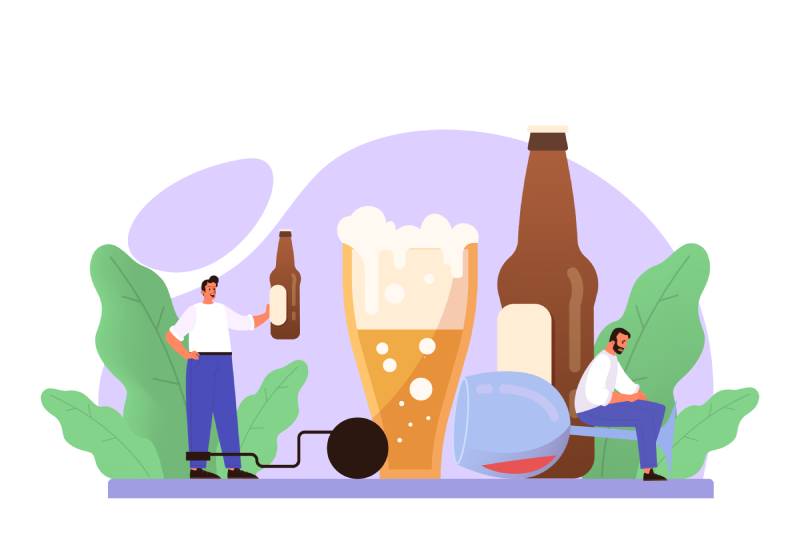
De-Addiction
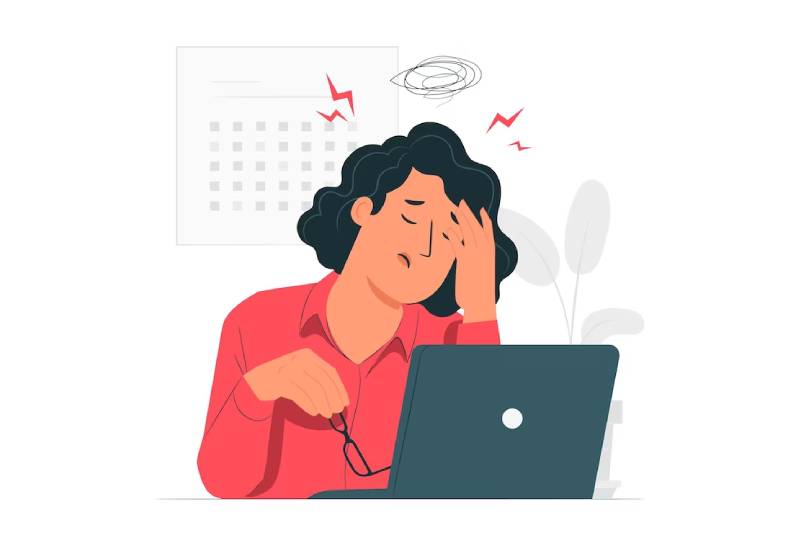
Headache
- Depression.
- Bipolar Disorder.
- Anxiety Disorder.
- Consuming alcohol, nicotine etc.
- Genetic reasons, such as Pain Sensitivity.
- Difficulty in dealing with stress.
- Negative affectivity.
- Decreased emotional awareness etc.
- Neurologic problems.
- Sexual symptoms.
- Pain.
- Gastrointestinal complaints etc.

Motivational Enhancement
- Avoid arguments.
- Accept resistance.
- Express empathy.
- Acknowledge discrepancy.
- Support self-efficacy.
- Building motivation to change.
- Strengthening commitment to change.
- Follow through and consolidation of motivation.
- You can feel better.
- You can regain self-confidence.
- You will be stress-free etc.
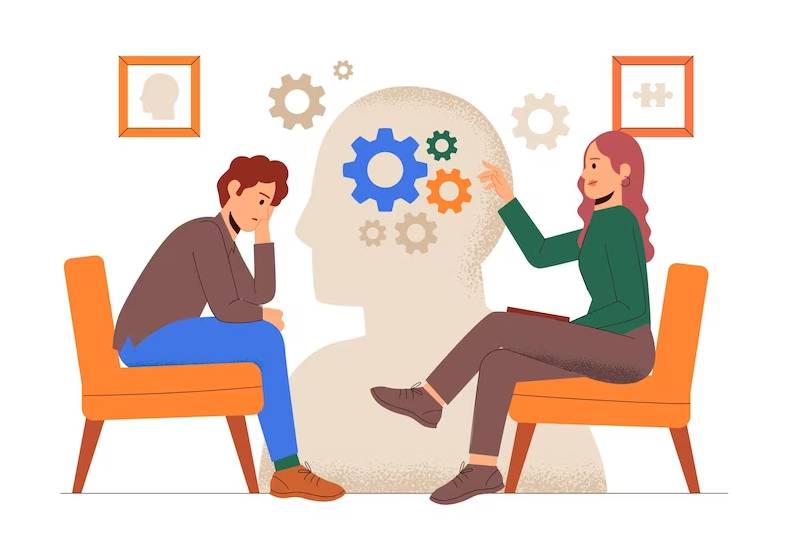
Counselling and Therapy
- Anxiety, Depression, Stress.
- Relationship Issues.
- Academic Problems.
- Loneliness etc.

Couple Therapy
- Straight or Gay Relationships.
- Relationships with a significant age gap.
- Young teen or college relationships.
- Interracial Relationships etc.
- Emotionally Focused Therapy.
- Psychodynamic Couple Therapy.
- Behavioral Therapy.
- Cognitive Behavioral Therapy etc.
- Identifying Feelings.
- Exploring The Past.
- Focusing on Solutions.
- Teaching Skills etc.
WE HAVE BEST TEAM
Meet Our Spesialists
CONSUNLTANT PSYCHIATRIST
DPM, DNB Psychiatry, Child And Adolescent Psychiatrist (IACAM)
7 Years
CONSUNLTANT PSYCHIATRIST
MD psychiatry
8 Years
FOR BETTER MENTAL HEALTH
Healing Your Mental Health with Our Quality Support
'Nirvana Psychiatric Clinic' is providing you with the Best individualised Psychiatric Treatments in Raipur designed to help you, under the supervision of two excellent Psychiatrists, Dr. Vikalp Wasnik and Dr. Shalini Bijali.
500
HAPPY
PATIENTS
6
YEARS OF
EXPERIENCE
2
EXPERIENCED
DOCTORS
100
PSYCHIATRY
SOLUTIONS
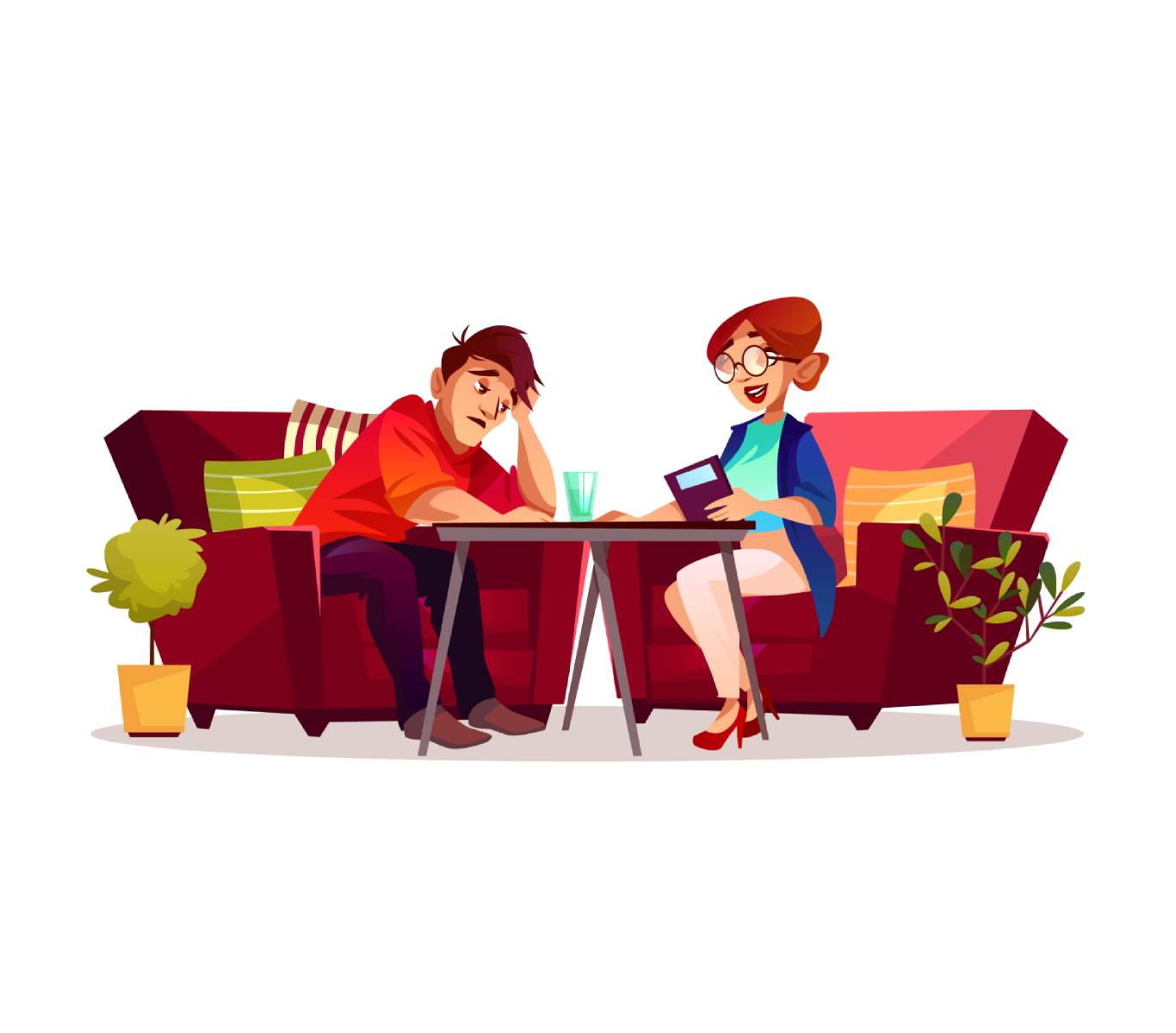
HELP YOURSELF
Through the Expertise of our
Psychiatric Consultants.
PATIENT EXPERIENCE
It is our goal to make your experience better than before, everytime you visit here for treatment.
QUALITY OF CARE
‘Nirvana Psychiatric Clinic’ follows a strict quality module to make sure of delivering the best care.
SAFETY MEASURES
Safety of your health and your personal information is taken care of with priority through our team.
Recent Blog Posts
Don't Suffer in Silence.
Speak up and get Help!!
We built a Place of Perfect Peace and Happiness, where a person's individual Desires and Suffering can Disappear. We stand out among Mental Healthcare Providers by the virtue of “Empathy”.
Submit your details to book yourself an online consultation now.
Visiting here?
#313, Lalganga Business Park, Pachpedinaka, Dhamtari Road, Raipur, Chhattisgarh
Timings
Mon – Sut : 4pm to 8pm
Sunday : Closed



